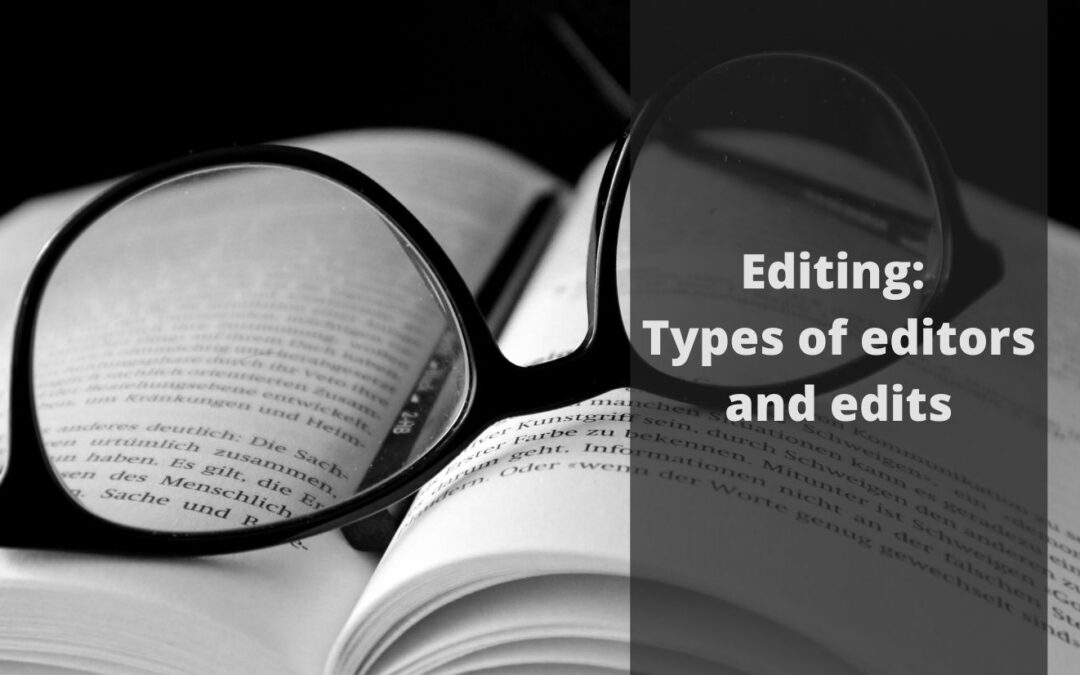When it comes to writing your book, you know the plot or outline, have your templates sorted, and have the book cover finalised. You’ve finished writing, and you’re ready to publish. Hold on!
Any book due to be published needs editing and proofreading – whether publishing traditionally, self-publishing or indie publishing.
There are many different types of editors and edits, and that is what I’m discussing here. Which edits come first, which editors do you need, at what point and when the proofreader comes in.
Getting a fresh set of eyes can also help you catch errors in the writing process.
Different types of editors
There are many different types of editors, but we will run through four that you are likely to come across during the editing process.
Developmental Editor
These editors look at the bigger picture of the manuscript. They’ll offer writing tips to help the overall flow of the book. They’ll check plot points and advise if there are any gaping holes in the story, if it needs to have more tension, less tension or if the characters are not believable or likeable enough. Most developmental editors are also known as beta readers; they read through the document and provide honest feedback to you.
Structural Editor
This type of editor helps with the structure of your book. They look at what structures might benefit the book and reader. A structural editor will look at different ideas that may help the plot move along or strip it back to be more linear. With a structural editor, the ideas will be more focused and complete.
Note: A developmental editor can sometimes offer structural edits, so check with them and see if they can do both.
Content Editor
A content editor can sometimes also be known as a copy editor. They will read through the book, correct any spelling, formatting, and grammar, make changes to sentence structure, and ensure the plot still flows after the developmental and structural edits. A content editor will give advice to keep the book engaging. They will also make sure the target audience is appropriate.
Proofreader
A proofreader is the last line of defence for your book. They will correct any spelling errors, delete duplicated words and look at any grammatical errors. They will read through the manuscript, amend and send it back. A proofreader is not an editor, although there are crossovers between a copy editor and a proofreader.
Rounds of edits
All these types of editors will have their round of edits. As mentioned above, developmental and structural editors can be the same person as can copy editors and proofreaders.
Each editor will do their edits in turn, send them back to the author for revisions and then check it again until both editor and author are happy; it will then move onto the next stage. The only time this changes is if the proofreader discovers something that has been missed in the other three edits – a very rare occurrence – and it has to go back through everyone again.
The editing process can take months, especially if you’re self-publishing and have to do this on your budget. Freelance editors may not be able to get you in immediately, and everything is on hold until their edits have been completed.
Finding the right editor is also important; check LinkedIn and Facebook groups for writers. Getting advice and recommendations from other authors is always a good idea. They will have been through the process before and will provide referrals and hints, and tips.
A couple of good places to look for the different types of editor are Reedsy, Upwork and The Creative Penn website.
You can also learn more about the difference between a copy editor and proofreader here.
Finally, good luck in your editing journey! It doesn’t have to be difficult, and just remember, when it’s all done, it’s time to publish your book!

Let’s have a chat!
If you’d like a chat about formatting your books, then you can schedule a free, no-obligation call with me.
Just schedule a time in my diary.
karen@coachkarenbrown.com


